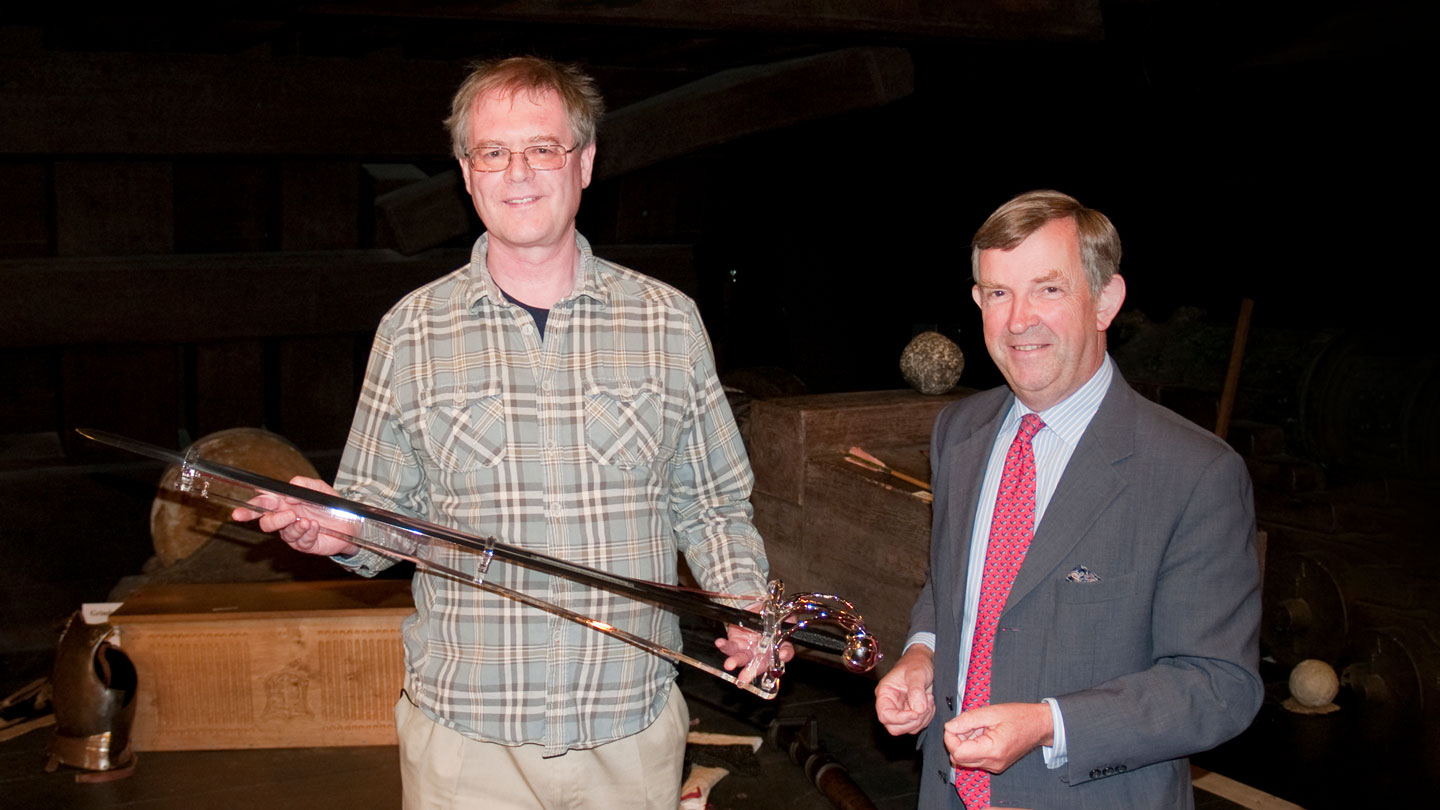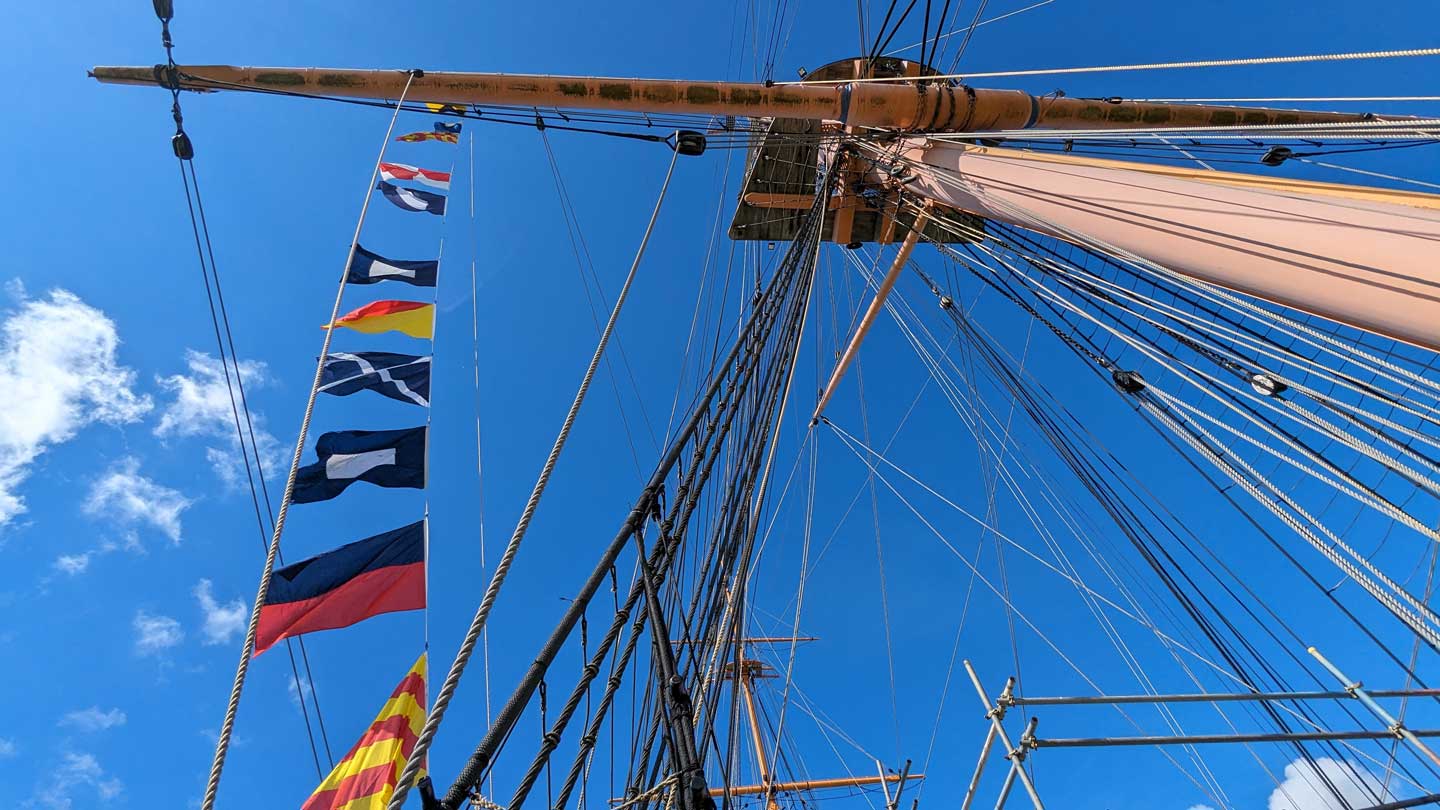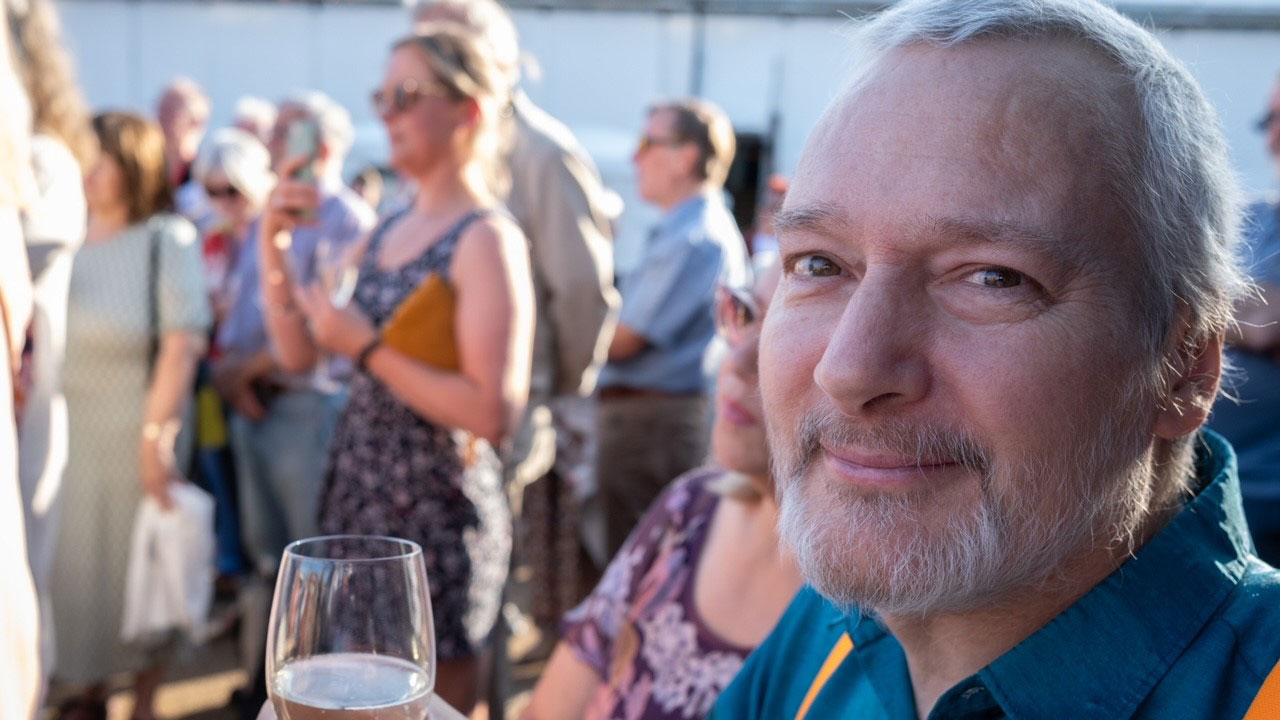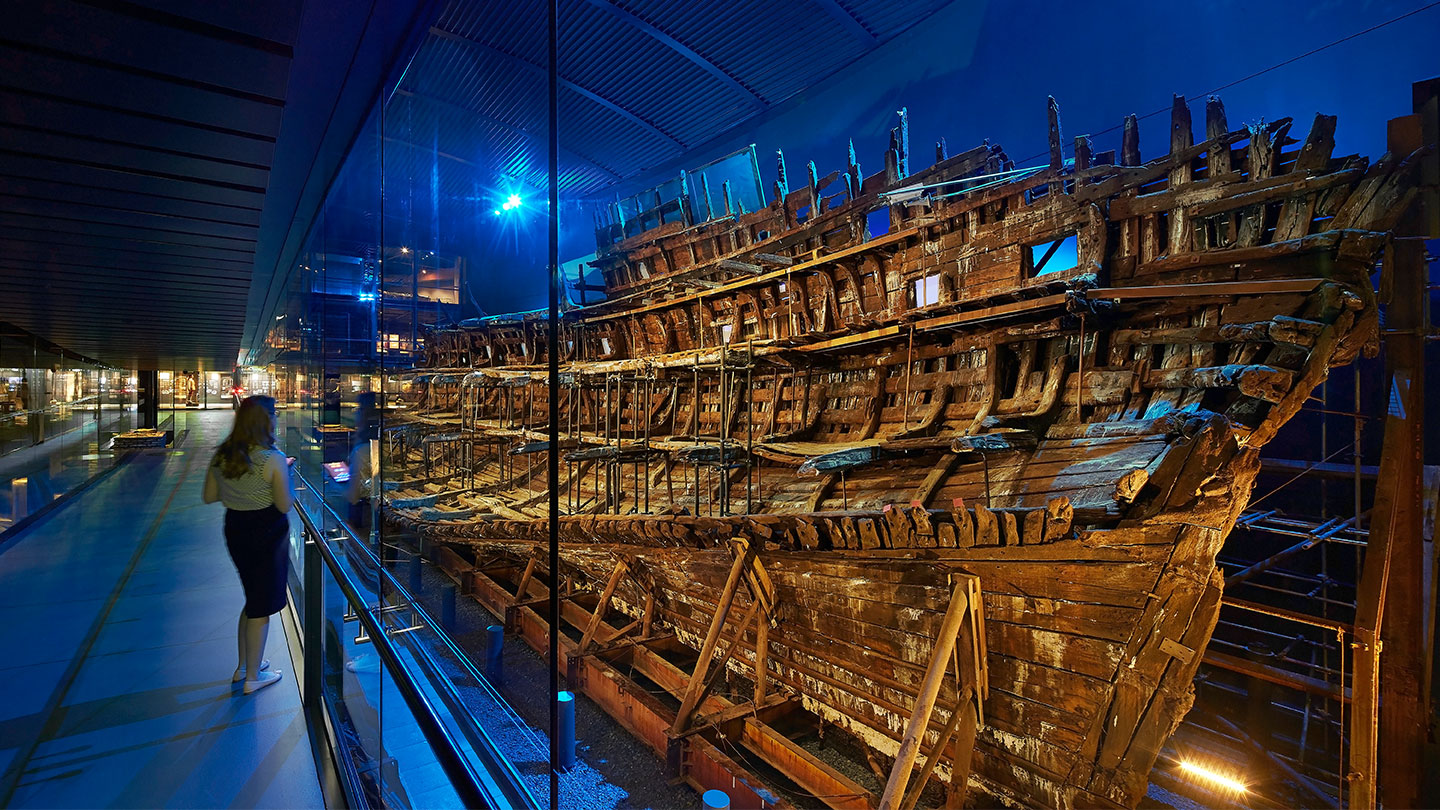I first heard the name of CJ Sansom some 15 years-plus ago, vaguely listening to the Radio 4 Book Review programme. I was driving home from my work as Chief Executive of the Mary Rose Trust, looking after Henry VIII’s flagship and attempting to build a new museum for the ship and her contents. Barely hearing the reviewers’ comments, I was suddenly alerted by all the speakers concluding in agreement that reading the book being reviewed was the very best way in which to understand Tudor history – and that the book Dissolution was a must read. I pulled over into a layby and wrote down the name CJ Sansom, Dissolution. Within a couple of days I had acquired and devoured this book, and realised the extraordinary gift the author had for putting the reader right into the action of the day.
I sent a letter to Christopher via his publishers, suggesting he came to see the old museum that we had, and that he might consider writing about the events of 1545. A rapid and positive reply showed real enthusiasm for the subject and the wish to visit. This was the start of a close and extraordinary association; he fell instantly in love with the concept of the time capsule that the wreck of the Mary Rose provided, both the remains of the ship and, just as importantly, the contents. These ranged from mighty bronze cannons to tiny nit combs and ear-scoops, clothing and shoes, the professional equipment of the officers and men, musical instruments, even the plates,spoons and cooking implements. Chris became absorbed and declared that although he had already started a book about the war with France in 1545, he was going to start again taking into account what he had seen at the Mary Rose Museum.
He decided that his man Shardlake had to be on board the Mary Rose when she sank in the Battle of the Solent. Those familiar with the series will already know that Shardlake escapes from every scrape, so inevitably he was one of the 30 odd survivors of that July day!
What I learnt, working closely with Chris throughout the gestation of the book, was that his research was always painstaking and immaculate. Walking the ground studying contemporary maps, learning the make-up of the crew, and the ship’s structure both internally and on deck. We explored old Tudor Portsmouth viewing the sight-lines to ensure his descriptions were realistic. I and other experts spent much time with him discussing every aspect of the year of 1545 and the sea battle, but learning so much from his exceptional knowledge of history. Heartstone was launched in 2010 with a fanfare in the old Mary Rose Museum, and thereafter Chris became a staunch supporter and campaigner for the completion of the conservation of the ship and collection, and for building the new museum. When it opened in 2013, we were exceptionally proud to have the major gallery The Men of the Upper Decks dedicated to Dr CJ Sansom. However by that time, Chris had been struck down by a cruel cancer that was to dominate his life thereafter.
Our friendship grew over the following years and I regularly went across to see him in Brighton, where-when he was fit enough-we would walk to a local pub for lunch. We would spend a couple of hours sorting out world affairs. He was furious about the Scottish independence campaign and both wrote against it and contributed to the opposition campaign. Like me he was passionate about the United Kingdom. As a card-carrying socialist, he tore up his cards during the Corbyn years, but remained true to Labour’s overall policies throughout his life.
Bravely coping with his illness and regular treatments at the Royal Marsden, there were times of great tiredness but also times when he regained his energy and started writing again. Lamentation was published following Heartstone, and in my view was one of his very best novels. I quaked in my shoes just reading Shardlake’s long encounter with the King towards the end! As Tombland, his next story, was undertaken with some difficulty because of his growing illness, I was drawn into the narrative quite deeply during my regular visits. Regrettably the pub lunches had sadly ceased because of his incapacity. Chris was always seeking to expose new aspects of Tudor history that has been either forgotten or underestimated, and his wish for Tombland was to expose the importance of Kett’s rebellion in Norfolk. Together we pored over contemporary maps of Norwich and the surrounding countryside, debating the likely site of the battle. There were conflicting opinions, but typical of Chris, his historical essay at the end of the book carefully lays out why he chose to tell the story as he did. The academic historian was behind the fine storyteller at all times.
Chris kindly invited my wife Jenny (who invariably provided a fruitcake and a jar of marmalade for my visits to see him) and me to Norwich for the book launch in the Cathedral. He wanted to be interviewed by William Shaw, who told us before Chris came in that CJS was ill and that the interview might only last for 10 minutes or so. But it went on for over an hour and fascinated everyone present. What a public insight into the author’s mind; did he see himself as Shardlake, a lawyer with disabilities? Did Shardlake fall in love with Queen Katharine Parr or Princess Elizabeth, reflecting CJS’s own thoughts? We all stayed in the Maids Head Hotel (where Shardlake took rooms all those years before). The next morning Jenny and I walked the streets of Norwich with Chris, who told us so much of the history of the place as we wandered around. Again his deep research had equipped him to tell the story of the streets, both within the book and to us in the city.
Two years later Covid struck and we had to resort to using Zoom to have monthly talks (without cake!). I had been floating ideas for a further book from Chris the preceding year when he was feeling fit enough to embark on a new novel.
One day sitting in his little garden under the trees, he said he had three books in mind if he were spared the time, the first being to show that Edward VI was not such a sickly young king as history is inclined to describe him. Next he would like to have told the story of Mary and the atrocities of the return of Catholicism, and a final one on Elizabeth. Regarding the first book, I suggested that he look at 1553 and the expedition to find a north-east passage to China around the top of Norway. This idea seemed fruitful, and Chris embarked on the novel, putting Shardlake into a fictional busy shipyard in Ratcliffe on the Thames, not far to the east of the Tower of London. Lockdown gave me the chance to offer much detail on shipyards, shipbuilding and the contemporary maps of the buildings and streets of that time. Chris set to with gusto, and I was privileged to receive chapter after chapter which showed he had lost none of his superb skill to put the reader in the thick of the inevitable horrors, unexplained deaths, and the mire and smells of Ratcliffe. But then the illness returned with increasing vengeance, Chris became exhausted by the treatments, and he could no longer continue his work. I last visited to him in February this year and he told me that he had the whole story in his head but no ability to continue. He promised to tell me the twist at the end of the book, but alas that was not to be.
I returned from abroad in late April to hear that Chris had been admitted into a hospice for end-of-life care. I managed to get to see him on Friday, the 26th of April to find him very drowsy through his medication, but well looked after and in relative comfort. I was able to pass on peoples’ love, and reassure him that both his books and the Mary Rose Museum would be his long-lasting legacy. He was able to comprehend me but very limited in replies, and he was close to sleep. But as I left, I congratulated him on lying in bed with a Mary Rose T-shirt on. Suddenly his eyes opened very wide and sparkled, and with a wide grin on his face – that of the Chris I had known for years before – he said with a laugh, “Of course! What else?!” And then he dropped asleep and I crept out.
Chris was a very remarkable man, private and modest, fascinating in his conversations, caring about individuals, generous in the issues that moved him, and a great friend to those of his small and close circle of confidants. I know from our previous conversations that he was happy to leave this troubled world. May he rest in peace.



